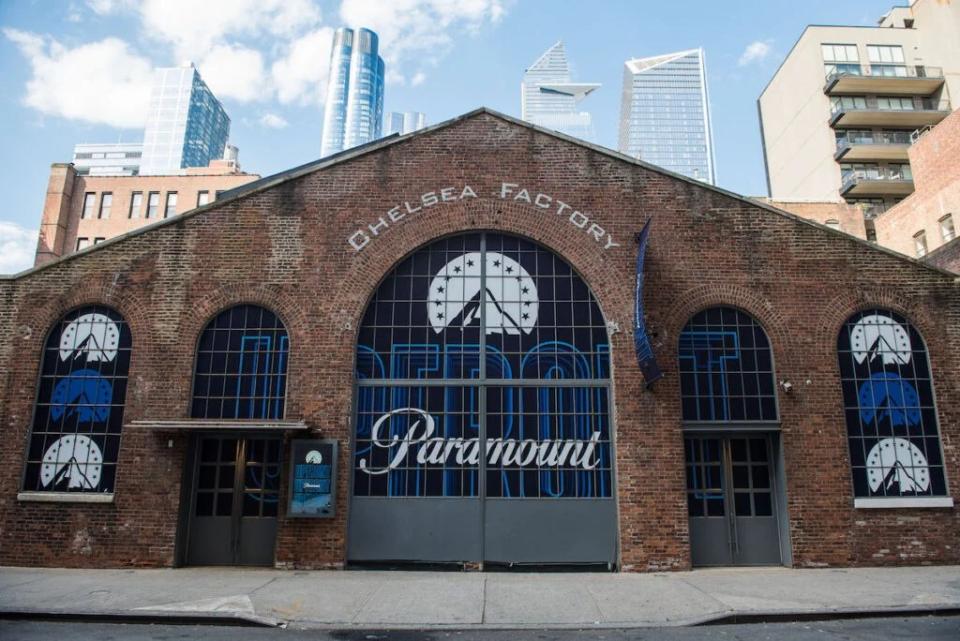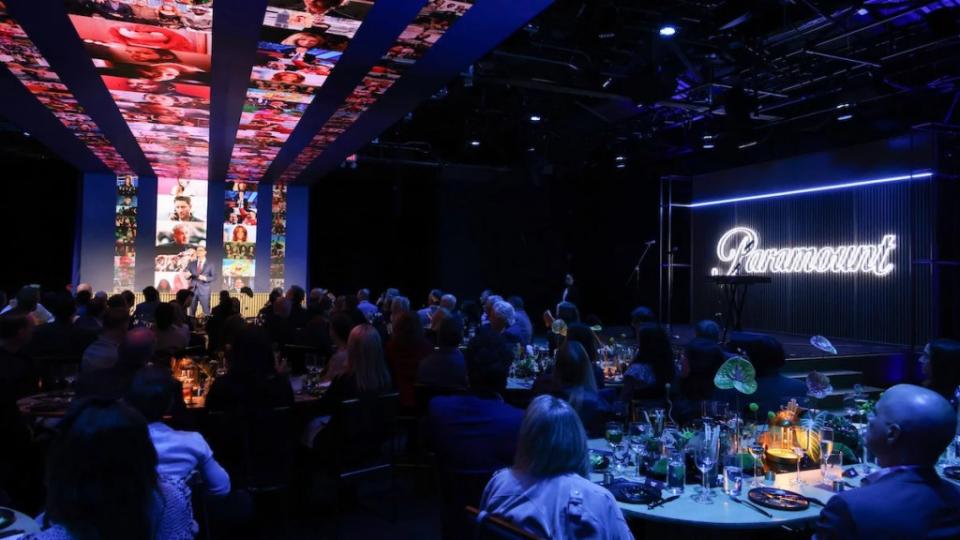Paramount Advertising Boss Says Bob Bakish Exit, M&A Uncertainty Is ‘Background’ Noise During Upfront Talks
Despite all of the uncertainty surrounding Paramount Global’s future, advertising president John Halley says the recent leadership shakeup following CEO Bob Bakish’s resignation and ongoing merger talks have not had a significant impact on its conversations with advertisers going into Upfront presentations.
“It doesn’t change our advertising strategy at all,” Paramount Advertising president John Halley told TheWrap. “On the one hand, you think, ‘Wow, the timing of this is odd,’ because it happens when we’re starting our Upfront presentations. On the other hand, it’s helpful because we can actually engage with them on the topic. But what I would say is that the news has been background and not foreground.”
He emphasized that the company’s advertising partners and their clients are focused on the “amazing story” that Paramount has to tell.
“They want to hear how we can help them enable their vision, they want to hear how we can help them achieve advertising goals and the teams that they’re working with and the assets that they’re investing in are unchanged,” he added. “So it’s interesting timing-wise, but the reality is that from the point of view of our partners on the other side, a lot of consistency remains.”
Last year, Paramount chose to skip the crowded Upfronts week with its competitors in favor of a series of more intimate gatherings with its agency partners and their clients. Paramount closed the 2023-2024 Upfront season with a “low- to mid-single digit” increase in ad dollar commitments.
This year, the company has continued its smaller presentations with nine events across New York, Chicago and Los Angeles that began in April and will wrap up next week. The advantage of this strategy is more opportunity for early, one-on-one, in-depth conversations with partners as they put together their plans, Halley said.
“The Upfront of the old days where you would go in and talk about the programming grid and the schedule and preview new shows and then go have shrimp cocktail is over. In addition to talking about the content you offer, you also have to talk about multi-platform strategies and your advertising product suite and how you’re enabling the agencies and the brands to do what they need to do,” he explained.
“As the message becomes more varied and complex, the format needs to change to acknowledge it and the feedback on this is unanimous that it’s a far better format for us to tell our story, for them to hear our story and for them to surface to us the things that they’re thinking about. It’s for the modern age and we’re not going back. It’s much more effective.”
Paramount’s direct-to-consumer division recently topped 71 million subscribers. To date, the company has 160 million monthly viewers on linear and 100 million monthly viewers on digital.
Check out the rest of the conversation with Halley below.
What are you hearing from your conversations with advertisers so far?
We’re telling a story about bringing more transparency to premium video buys. Television has really been thought of as a top of the funnel awareness generator historically, that’s where its value has been. But as we move into connected TV environments, one on one environments, retail media networks, closed loop attribution, we can now describe the impact of television advertising not just as a top of the funnel product but also one around mid funnel and bottom of funnel conversions and that’s very, very important when we are trying to describe the value of our products to the people who are investing in it.
We hear a lot about understanding the value of the format and the way that measurement needs to change and evolve to do that. We say Paramount is performance, that’s what it’s about. Ultimately, all medias performance, regardless of how it trades or how it’s stewarded, what currency its bought in, ultimately it is purchased to drive results and outcomes and the technology and data landscape within which we operate is becoming increasingly sophisticated and capable of providing that transparency and something that we’re really leaning into.
We’ve had tremendous response when we show tape of the new and the upcoming programming. We’re on a really, really big roll, our last six months have been incredible. We’ve doubled the rating on the VMAs, we grew the Golden Globe viewership by 50%, Grammys by 40%, we had a record-breaking NFL season, the Super Bowl was the most watched program in the history of US television. We went right into our broadcast premiere week. We had the top 16 shows on TV. Tracker is a runaway hit, it’s the No. 1 award show on television right now, it’s delivering more 18 to 49 viewership than the NBA Playoffs. So that is resonating as well as our future slates. We have the final season of Yellowstone coming up, we have a couple new Taylor Sheridan shows including one called “Landman” which is about the modern day oil business starring Billy Bob Thornton and Jon Hamm and Demi Moore. It’s really an amazing production. So there’s a lot of excitement around our content slate and the format just brings it all to life.
What’s the biggest challenge facing the ad market right now and what’s your recipe for success?
I think that the the biggest challenge in general has to do with fragmented viewing and and the notion of identity. In other words, how am I to understand that this person over here is the same or different than that person over there. It’s a problem that is brought about by the opportunity of bringing all this additional data and activation opportunity into a premium video marketplace, but all that needs to be resolved. So there’s there’s a lot of exactitude in how money gets allocated and what you see from brands and agencies and publishers is this commitment to try to reassemble the single view of the world so that we can take advantage of targeting and opportunities for driving ad quality and effectiveness as we embark in this new era of a lot of information underlying everything.
Paramount+’s impression supply is at the top of the market. We’ve been unbelievably successful in growing that product and advertising side of that business over the course of the last several years. The advertising revenues have grown in line with and in excess of the subscriber ads, which has been tremendous. The product itself is really driven by the tailwind of all the amazing content that we’re bringing on, a lot of the big new Taylor Sheridan shows which people really love and sign up for, we also have the NFL. It’s a very broad product and that programming strategy has proven to be very successful. It has grown incredibly and so we’re extremely excited and bullish on Paramount+. We couldn’t be happier with it.
How much of a shift are you seeing in ad spend from linear to streaming? What are you doing at CBS to adapt to that shift?
So the shift has been going on for quite some time. Viewers go to connected TV environments, that’s where the time spent is. If you look at the Nielsen Gauge, you can see that migration over time, there’s more time spent viewing in streaming than there is in broadcast or cable. It became the biggest piece of that pie in the summer of 2022. People spend more time watching streaming than they do other outlets and the investment dollars have moved over as well.
We have an enormous streaming footprint. We have Paramount+ which actually includes all the CBS shows, our second window Paramount releases, as well as a lot of our enormous library. It’s a tremendous product that has added more subscribers since its launch than any other streaming service. So a lot of success there. We also have Pluto TV, which is a leader in the FAST category and viewership has grown quite a bit there.
So money has moved into these connected TV environments but we’ve been able to capture it The majority of our digital video business is programmatic so we’re leaning into the ways of buying, we have the audience in the formats that advertisers need, and we’re interoperable in all these different lanes of activation. This is not the business of a decade ago, it’s a totally different business, but one in which we’ve been extremely successful.
How does live sports play into the equation of Paramount’s streaming advertising?
There’s a very interesting phenomenon that is happening as the viewing options atomize and people are watching things on their own schedules at different times in a bunch of different environments that the power of live is becoming increasingly important and what we see is tremendous growth and interest in sports and tentpoles.
We play in a market of scarcity. There’s 17 regular season, NFL games, there’s only one PGA tournament per week March Madness exists over this compressed three week period. Those are the kinds of franchises where you really have a lot of control as a seller. You can price them and we feel very lucky about our sports portfolio.
As the viewing moves to streaming, we can see an increasing percentage of the total viewing happening inside of Paramount+. The UEFA Champions League is actually exclusively available on Paramount+ the rest of the year. We show the semis and finals on the broadcast network but the vast majority of Champions League is happening inside of Paramount+. So ultimately people have habituated themselves to streaming-only platforms and the inclusion of sports is going to grow the weight of streaming consumption of sports.
What are you seeing in advertiser demand for Pluto TV?
So Pluto has been a critical cornerstone of our connected TV play. It has just skyrocketed. We closed that acquisition in March of 2019. And at the time, it was doing like $60 million in revenue. Three years later, it was doing a billion dollars in revenue and the active user base quadrupled. So it’s been a tremendously successful property. It appeals to a certain kind of viewer in a certain kind of mood and it’s consumer appeal is indisputable.
We have over the course of the last couple of years been able to really improve the advertising quality, the ad experience the overall experience of the products,and viewership continues to grow. The viewing hours I believe are up 27% in 2023. So it’s this extremely fast growing platform. When we made that investment into FAST, everyone though the world was going into on-demand viewing. We knew better and understood the value of it. We understood the value of frictionless consumption and were proven right.
Pluto exists in a more competitive landscape than it did several years ago but is continuing to grow. We have it programmatically enabled to capture as much demand as as we possibly can and we have the ad quality products in place to ensure competitive separation and frequency management regardless of which pipe the demand is coming in. We put a lot of work there and advertisers have a lot of faith in the quality of the product. So we feel really good about Pluto’s future and very, very proud of its success and how far the product has come.
How do you view competition in the advertising space from Netflix, Disney+, Prime Video, Tubi and others?
There is more supply than there ever has been before. I always say if you look at the market just three or four years ago, less than half of the connected TV players even had ad tiers and now they all do. So there is an influx of fresh supply but the other thing that is incredible and does not get enough attention is that connected TV is not just taking TV awareness dollars. Connected TV competes for other kinds of platform dollars, so you have [small and medium-sized business] money coming over into CTV, you have performance money, you have these budgets that were normally thought of as bottom of funnel performance-based things now coming into CTV. Also as a format, it’s going to compete in other lanes. So we think that at the end of the day, more money will be coming into this vertical of premium video because it is so effective and works in so many different ways for advertisers.

The exterior of Chelsea Factory in New York, where Paramount held one of its 2024 Upfront presentations

John Halley speaks to advertisers at one of Paramount’s 2024 Upfront presentations

A general view of the atmosphere is seen at the Paramount New York Upfront Partnership Event on April 29, 2024 in New York City.
The post Paramount Advertising Boss Says Bob Bakish Exit, M&A Uncertainty Is ‘Background’ Noise During Upfront Talks appeared first on TheWrap.


